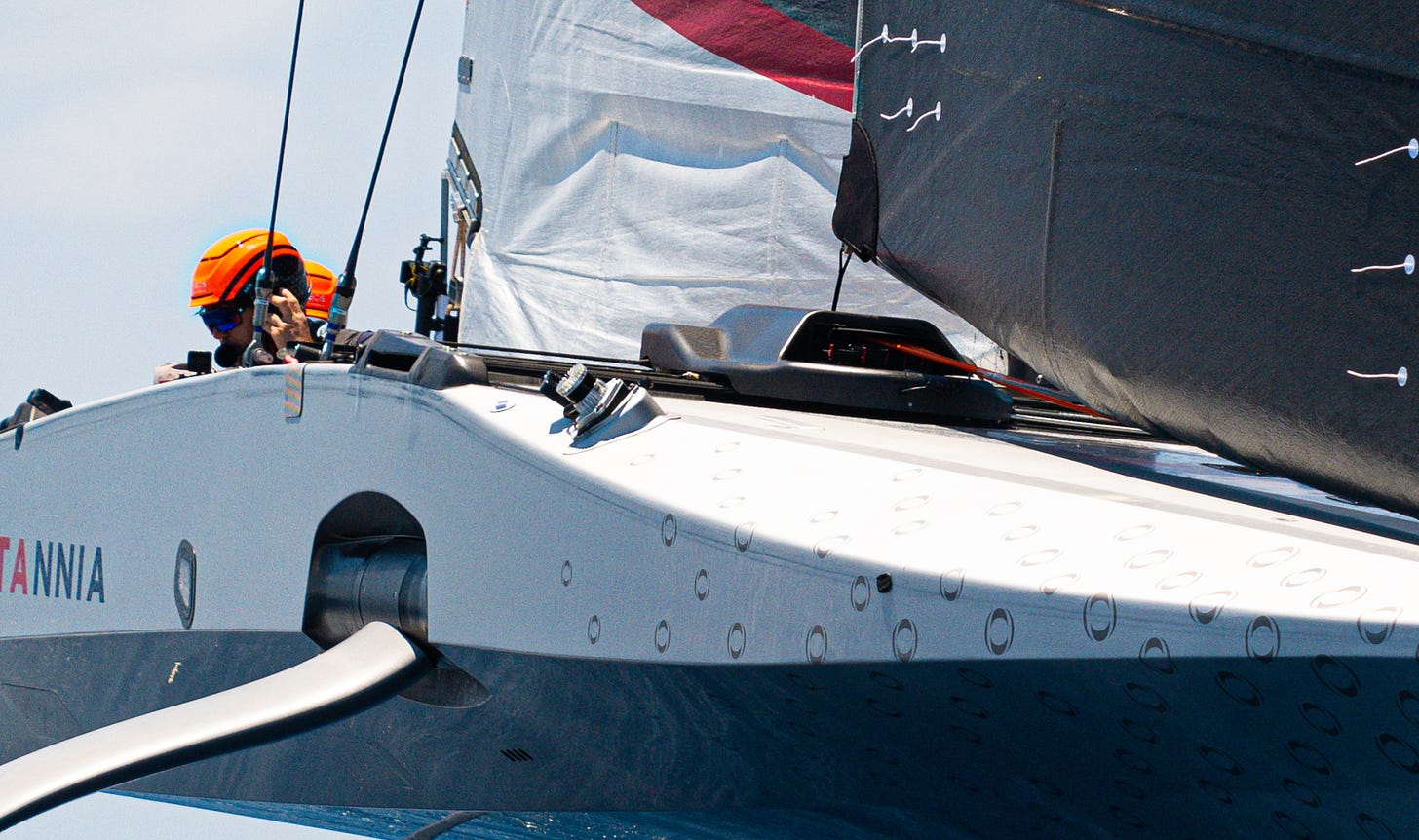LiDAR in the America's Cup
A look at what the teams might be using onboard LiDAR 3D mapping technology for in the run up to the 37th America’s Cup
Avid followers of the America’s Cup shared reconnaissance programme videos and photos may have noticed most if not all of the teams in this latest cycle using onboard LiDAR units while training and testing.
LiDAR – the acronym stands for ‘Light Detection and Ranging’ is a technology that uses pulses of laser light to accurately map objects in 3D.
LiDAR sensors can take hundreds of thousands of measurements each second. By measuring the time the light pulse takes to return to the sensor the system can build 3D visualisation of the targeted object in the form of a ‘point cloud’.
The technology is widely used commercially for applications such as the mapping of changes in land topography over time, measuring the degree of sag in power lines, estimating the height of trees, and computing the size and volumes of buildings or other large objects. LiDAR can even determine precise wind direction and speed data by the Doppler shift brought on by air particles in motion.
So what then might the 37th America’s Cup teams be using LiDAR technology for?
As you might expect, the teams have not been too forthcoming in answering that burning question so I checked in with Doyle Sails chief designer Richard Bouzaid – an America’s Cup veteran – for an expert steer.
It turns out that LiDAR is not making its first appearance in the America’s Cup arena.
“It was used years ago, I think, for looking upwind to get a feel for the wind speed and direction,” Bouzaid told me. “But it was banned for that use [in later editions].”
Now though, advances in the efficiency of LiDAR systems means its general use is much wider and the size of the units has shrunk to a point that makes it practical for onboard use on an America’s Cup yacht – principally, according to Bouzaid, for the live imaging of sails.
“It’s used by the teams to get images and data on their sail shapes that can be referenced back to the yacht’s performance in the data analysis process.
“Sails are always a bit tricky as their shape is always changing and moving around, so this tool may in time be more effective than cameras in recording sail shapes and movement and for manipulation of the shapes.”
So has LiDAR replaced other technologies / techniques previously used in the 3D assessment of sail design and performance?
“It’s pretty early days for this technology in this application and I would say the use of LiDAR in the America’s Cup is really about gathering more data to add to the analysis loop around what makes the boat go faster.
“Last time around we used fibre optics for sail shape measurement along with cameras, but this was not used when it came to the event to keep weight down.”
[The AC75 rules in the upcoming 37th America’s Cup preclude the use of LiDAR during racing.]
Bouzaid says LiDAR is not commonly used in sail design outside of the America’s Cup. Might it though become a trickle down technology at some point in the future?
It’s a fast evolving technology and used in so many things now and getting smaller and cheaper, so most likely it will be an option down the track. For now I would not say it's practical outside of AC teams that are massively data intensive and are hungry for more accurate sail information for further evaluation in CFD and other tools.
“It really is another form of the VSpars or similar type systems that use cameras to collect sail shape data. Maybe one day LiDAR will replace cameras but right now most sailing teams outside the America’s Cup don’t have the time, resources – or requirement – to use this.






